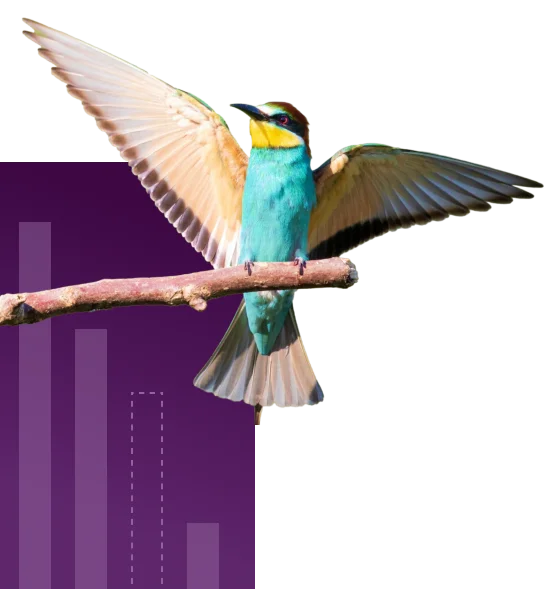
Free Business Case Study
How Did Salesforce Implementation Drive Innovation & Growth In Retail And Consumer Goods Sectors?
Salesforce
Salesforce Development Salesforce Implementation Salesforce Integration AppExchange App Development Salesforce Consulting Hire a Salesforce Developer Salesforce Managed Services Salesforce Data and AIServiceNow
ServiceNow Consulting ServicesServiceNow Implementation ServicesServiceNow Managed ServicesDownload E-Guide

Download E-Guide
Register to read the complete guide as PDF on your email.
Download Customer Success Story

Download Customer Success Story
Submit your details below to get a detailed success story delivered to your inbox as a PDF.
Download Case Study

Download Case Study
Register to read the complete solution and benefits of this Case Study as a PDF on your email.
Download Whitepaper

Download Whitepaper
Register to Get the Whitepaper Delivered Straight to Your Email.
Download Industry Report

Download Industry Report
Register to Get the Industry Report Delivered Straight to Your Email.
Table of Contents
Who wouldn’t love having the most favoured business intelligence and data visualization tools? Definitely, each business is out there.
And yes, We’re talking about Tableau, which makes data analysis fun, accessible, and presentable.
Today, data rules the world. From online shopping trends to customer feedback, businesses are swamped with raw information. Shockingly, only 8% of companies use all their collected data. Just imagine the potential that’s locked away in the rest of them.
Data is powerful, but its actual value emerges when it’s converted into actionable insights. Converting unprocessed data into actionable insights is no less than finding needles from a haystack. Relying on spreadsheets or traditional reporting might not even be included in your consideration list – Tableau’s got a solution for all.
Let’s start exploring how to turn your data into gold with Tableau.


Tableau is one of the leading names in business intelligence and data visualization tools. It analyzes data and makes it accessible and intuitive for users across organizations. By transforming raw data into an interactive and shareable dashboard, Tableau shares insights that help decision-makers formulate data-backed strategies.
It all started with creating a visualization tool that has now grown into an enter enterprise-level with multi-deployment. Recently, in 2019, Salesforce acquired Tableau, and now its products are blending well in the Salesforce ecosystem, enabling Salesforce users to turn data into insights.
Unlike traditional business intelligence tools that demand advanced technical expertise, Tableau focuses on being user-friendly, enabling technical and non-technical users to make the best of it.
Through Tableau, users can get into the roots of their data and explore & identify trends, patterns, and demands with various visualization options available. Also, it supports multiple data sources, allowing users to connect and get insights even from spreadsheets and databases flexibly.
Next, let’s check out the features that Tableau is offering:


The following are the top features of Tableau:
Spreadsheets are now an ancient tool. Businesses are moving to data but with captivating visuals. Tableau’s data visualization features go beyond creating bar and pie charts. It makes a wide range of charts and graphs with advanced options like boxplots, bullet charts, Gantt charts, and more, transforming complex data sets into easily digestible formats.
Tableau aims to present data and deliver a narrative that both technical and non-technical users can easily perceive. By strategically using colours, patterns, and chart types, Tableau brings out hidden trends, identifies patterns, and paints the bigger picture comprehensively.
If you are still looped in the process of outdated reports, then Tableau is your way out that door. It empowers stakeholders to make decisions based on real-time processed data.
With Tableau, you can access and analyze real-time data on sales, inventory, or any other critical metric. This frees your dependency on the IT team to generate reports per different requirements.
Real-time data availability helps proactively identify and address issues before they get bigger. Employees also get access to performance metrics at all levels, ultimately creating a data-driven culture within the organization.
Organizations use many data management platforms, such as CRMs (Salesforce, Zoho, Hubspot), departmental databases, and ERP; some still use spreadsheets.
We can’t even imagine how difficult it is to unify and synchronize data from all those sources. Tableau also relieves this stress. Its blending capabilities combine data scattered across various sources, such as in-memory data, live data feeds, cloud storage, data warehouses, Excel sheets, and more.
Now, your employees don’t get the headaches of manipulating data manually through complex scripting or VLOOKUPs, which saves time and minimizes room for errors. It also gives access to a holistic data view to all your company’s stakeholders, like customers, finances, shareholders, and others.
A Shared Understanding of Data Your data shouldn’t be restricted to siloed information. It must help your employees collaborate better and contribute to the organization’s success. Tableau helps with this, too, by facilitating the data analysis for different teams and allowing them to create visualizations from blended datasets, share them with colleagues, and gain insights from a comprehensive perspective.
It also simplifies the typical report-sharing process by offering products like Tableau Online or Server. This equips decision-makers with quick access to the information they need to make thoughtful futuristic decisions.
What if we told you that you can access all the crucial data points you need in one place?
This is what Tableau’s dashboard functionality delivers. It provides a holistic view of multiple datasets on a single screen. What’s even better is that it’s all connected in the form of sheets and dashboards. Whenever you make any change in the sheet, it will automatically reflect on the corresponding dashboard or vice versa. Additionally, both elements are dynamically getting updated. Now, your employees don’t have to switch back and forth between multiple worksheets, which saves time in the data exploration process.
The dashboard is entirely customizable, allowing users to personalize their workspace and ensure they work as per relevant metrics.
Through these comprehensive features, Tableau helps businesses convert data into a strategic asset, which fosters collaboration and better decision-making.
Tableau’s capabilities don’t confine it to creating charts and graphs; it goes miles beyond that whether you need to analyze the impact of weather patterns on your sales or visualize sales figures across different operational territories, considering specific local regulations.
The mapping features allow you to mark data activity at the micro-level, which includes cities and postal codes. This provides in-depth clarity on your geographical data and enriches the storytelling potential of your visualizations.
The business world is now operating across borders and time zones, and that too 24/7. In a business setup like this, employees are constantly demanding remote work or working outside of traditional office hours.
This led to the development of the Tableau mobile feature, which breaks the limitation of keeping employees stuck to the boundaries of the office and provides the feasibility of working from their preferred place. With Tableau mobile, you get indefinite mobile access to your data on your smartphone, tablet, or PC.
What if you can interact with your data just like you do with search engines? Tableau’s Ask Data feature lets you do the same. You can enter your question in simple English, and Tableau translates the same into a visual representation of the answer automatically.
Ask Data is one of Tableau’s powerful tools. It is capable of understanding complex queries written in natural language. You can ask for descriptive, predictive, and even prescriptive analytical concepts.
For instance, you can ask questions related to periods, such as “What were the sales figures in the last quarter?” or identify trends with questions like “What are the best-selling products?”. Ask Data also helps with spatial analysis, allowing you to ask questions like “Where are our most profitable customers located?”. This intuitive interface is a boon to users of all technical backgrounds, as it shares insights from their data.
There are several reasons why companies like Verizon, Experian, Netflix, and Ferrari rely on Tableau to transform their data into actionable intelligence. Tableau connects with nearly every sort of database, and its “live visual analytics” produces actionable results in extraordinarily user-friendly maps and charts.
Tableau is for decision-makers who want to see before they act. It is easy to share, is an expert at blending multiple data sources, and provides “live” visual analytics via charts, graphs, and maps. Unlike many BI tools, Tableau works with data from various sources, including in-house, cloud, and data warehouses.
Nike, JPMorgan Chase, Bank of America, FedEx, and MetLife are some companies that are actively using Tableau and converting their data into actionable intelligence. Tableau connects every database and provides “live visual analytics” through user-friendly charts and maps.




How Did Salesforce Implementation Drive Innovation & Growth In Retail And Consumer Goods Sectors?
Increase In Operational Efficiency and Cost Reduction
Enhanced Visibility & Data-Driven Decision-Making
Personalized Marketing and Customer Loyalty
Overall, Tableau is a game-changing platform that gives all users, regardless of their technical knowledge, an extra edge on insightful data.


For different purposes, Tableau offers different kinds of products:
To start with, we have Tableau Desktop, which is a powerful data visualization tool that can be used to get insights out of data. A user-friendly drag-and-drop interface allows various data sources to connect, create clear visualizations, and share them with your team. Its free version has some limitations compared to the premium version, which has more functionalities. Tableau Desktop has two principal licenses:
The capabilities of Tableau Servers go one step further than individual data exploration. It is a web-based platform that allows users to work collaboratively on the same set of data, accessible from both mobile and desktop devices. Tableau Servers offer robust security features, user roles with specific permissions, and report scheduling.
It acts as a home base for data visualization, allowing users to publish, share, and manage their visualizations in a controlled and consistent manner.
Tableau Server is an ideal solution for big organizations that need to work and handle massive datasets with high user traffic. The only downside is the cost: implementing Tableau Server calls for a good amount of investment in all (hardware, software and infrastructure). This is why it is always advisable to connect with an IT consulting company that can implement this optimally, ensuring your existing systems keep working smoothly.
Tableau Online is a cloud-based substitute for Tableau Server. With it, you don’t have to worry about server maintenance and setup, as you can upload your datasets from anywhere using the Internet, streamlining the data visualization process. This makes Tableau online an ideal option for teams working remotely and cross-departmental collaboration. No matter where you are and what device you are using, you can stay informed with Tableau Online and make data-driven decisions.
For Tableau Online, Security is one of the primary concerns. To protect your data, they employ stringent security features like encryption, secure connections, and user authentication. Additionally, they adhere to best practices to maintain data privacy and confidentiality, keeping you stress-free when working with sensitive information.
One of Tableau’s free offerings is Tableau Public. It is primarily for students who are willing to learn data visualization and understand business intelligence. It is free and accessible to all individuals and organizations with restricted budgets who want to protect their data from any public breach, although it comes with limited functionality.
Tableau Public allow users to publish their dashboards and visualizations on a dedicated platform. It also facilitates the diffusion of more information, transparency, and data-driven dialogues.
Tableau Prep is a data preparation and ETL (Extract, Transform, Load) tool that helps users clean, shape, and combine data from various sources, making it ready for analysis and visualization in Tableau Desktop or Tableau Server. It is crucial to clean data; otherwise, datasets may contain NULL values and lead to incorrect predictions.
Tableau Prep features an intuitive interface that simplifies the data preparation process. Users can perform data cleansing and transformations using a visual, drag-and-drop method without extensive coding or scripting.
It supports many tasks, such as data deduplication, imputation, and filtering, among other cleaning and shaping tasks. Users can rearrange data by splitting, merging, or pivoting fields, making it easier to prepare for analysis and visualization.
Tableau offers three subscription levels, which are affordable to all-size companies, even sole proprietors.
| License | Pricing | Description |
| Tableau Viewer | $15/user/month | Has minimal permissions. It only allows users to view and interact with dashboards and visualizations. It restricts users from accessing complete datasets but shares summary data with users. |
| Tableau Creator | $75/user/month | Provides access to all Tableau’s features and controls, along with various advanced functionalities like server deployment monitoring, programmatic content migration, server administration capabilities, etc. |
| Tableau Explorer | $42/user/month | Provides User access authorization to interact with dashboards and visualizations. Users are also permitted to download, curate, and share data and reports but can’t input data. |
Tableau is a powerful tool that helps organizations process their data and turn it into actionable insights. And let’s face the truth: managing and unifying the whole bootload of data can be a challenge, as it is often scattered across various systems.
With Data Cloud for Tableau, businesses can easily connect and unify Salesforce and other customer databases, enabling them to instantly analyze information, take action on AI-powered insights, and potentially reduce costs.
At Cyntexa, our Tableau experts can help you unlock the full potential of your data. We offer services like salesforce consulting service, implementation, data integration service, advanced analytics, and optimization to transform your data into a strategic asset that drives growth and innovation. Contact us today to get started.
Don’t Worry, We Got You Covered!
Get The Expert curated eGuide straight to your inbox and get going with the Salesforce Excellence.
AUTHOR
Salesforce Data Cloud, AI Products, ServiceNow, Product Engineering
Co-founder and CTO at Cyntexa also known as “VJ”. With 10+ years of experience and 22+ Salesforce certifications, he’s a seasoned expert in Salesforce Data Cloud & AI Products, Product Engineering, AWS, Google Cloud Platform, ServiceNow, and Managed Services. Known for blending strategic thinking with hands-on expertise, VJ is passionate about building scalable solutions that drive innovation, operational efficiency, and enterprise-wide transformation.


Join Our Newsletter. Get Your Daily Dose Of Search Know-How
To use Tableau, you can start by connecting all your data sources, then drag and drop fields on the canvas to build graphs, maps and charts. Now, go to calculated fields and table calculations for analyzing and transforming your data, and arrange your visualizations into dashboards and stories to make them more presentable. At last, publish your findings to Tableau Server or Tableau Public to collaborate and share your insights with your team or the stakeholders.
As a popular business intelligence tool, Tableau connects, analyzes, and visualizes data from several sources. It allows users to create interactive reports and dashboards and present well-presented data stories, empowering organizations to make data-driven decisions and gain hands-on valuable insights hidden in their data.
Well, Tableau is both. It’s a data visualization software and a business intelligence tool that helps organizations of all sizes to explore, analyze and study their data more effectively. It is available both as a cloud-based solution and a desktop application, with the scope of flexibility and scalability in data analysis and reporting requirements.
Yes, Tableau Prep features some ETL (Extract, Transform, and Load) capabilities. Tableau Prep connects data from multiple sources, transforms it, and prepares it for analysis right there in the Tableau platform.
Become a next-gen business with us.
Tell us about your idea and we’ll bring it to life. Schedule a FREE consultation today.
Looking for a new career?
View job openings
By submitting, you consent to Cyntexa processing your information in accordance with our Privacy Policy . We take your privacy seriously; opt out of email updates at any time.
This site is protected by reCAPTCHA and the Google Privacy Policy and Terms of Service apply.
Looking for a new career?
View job openings